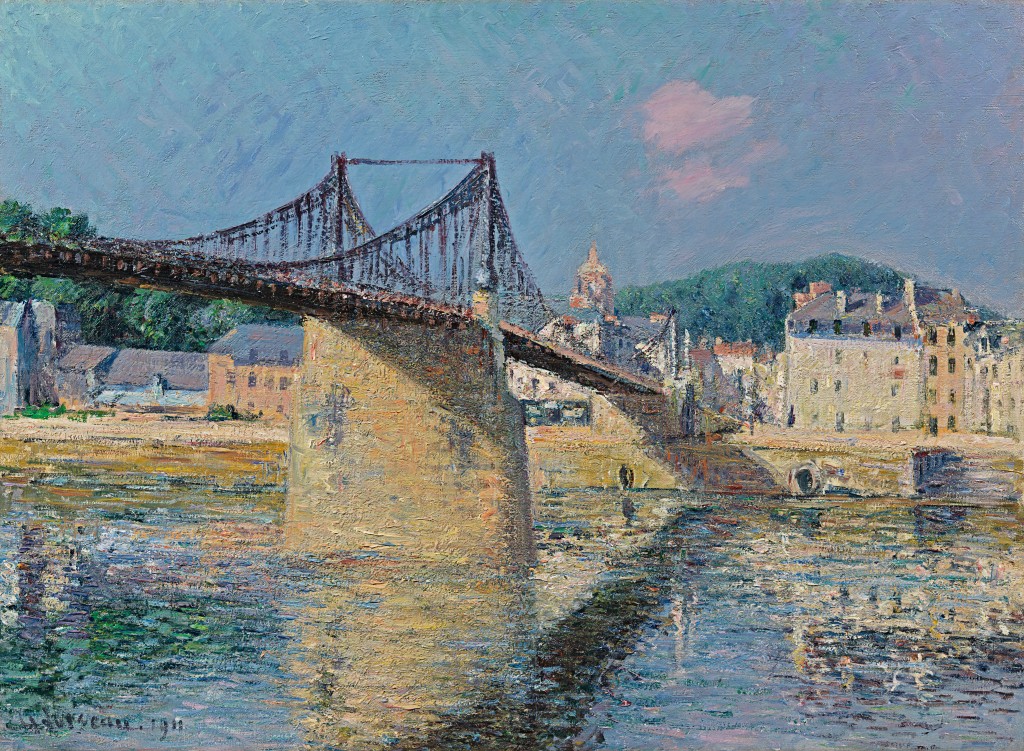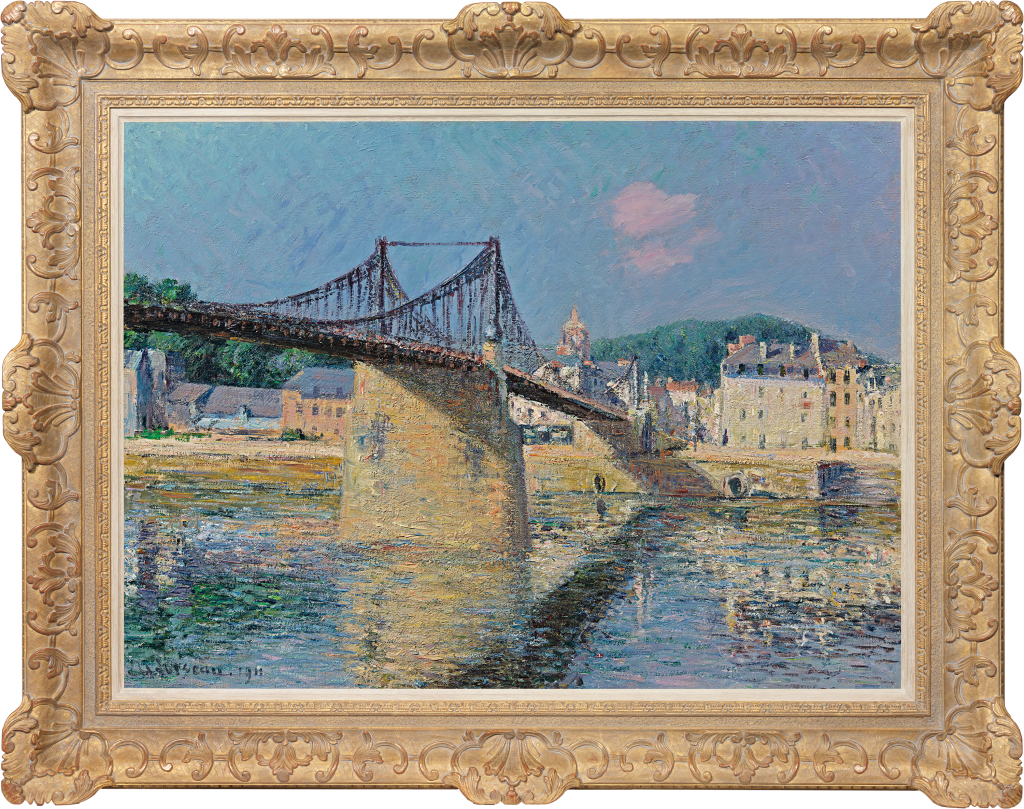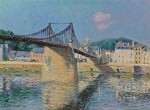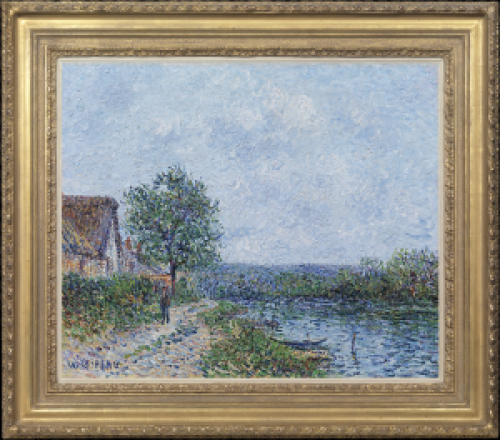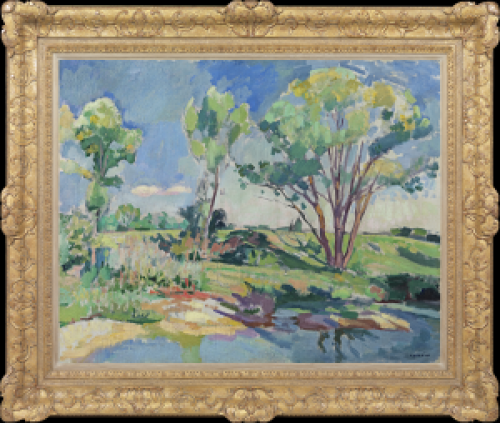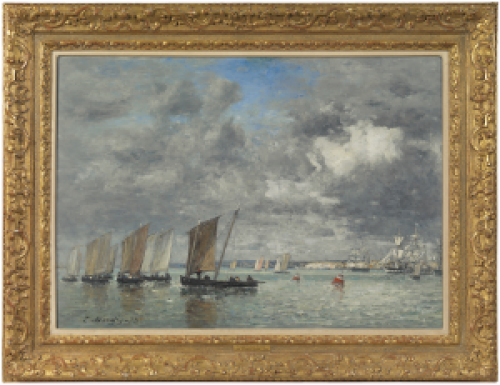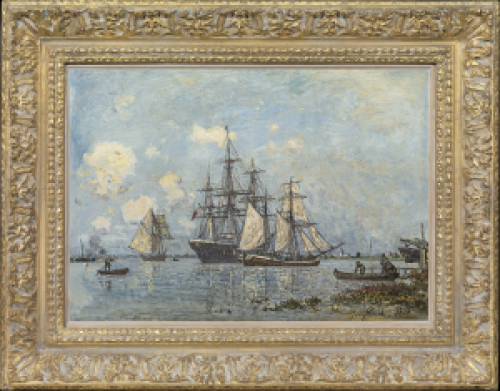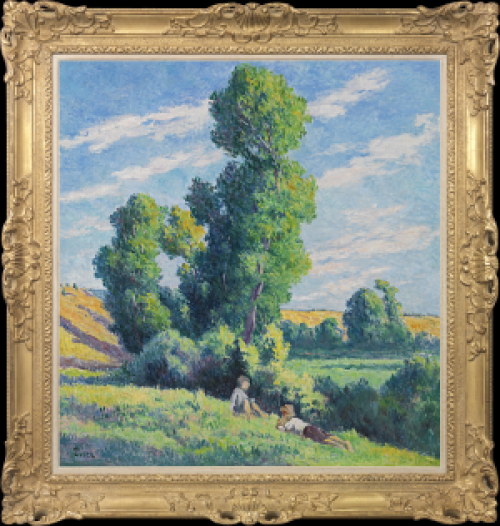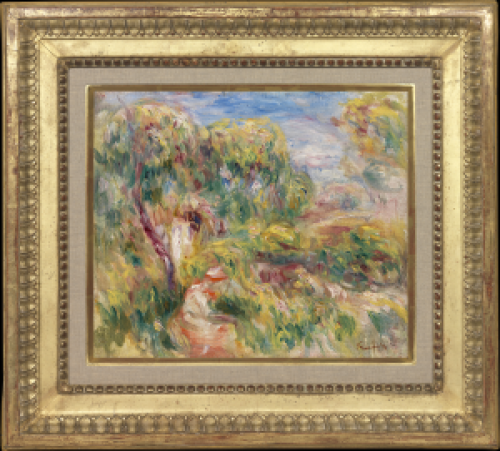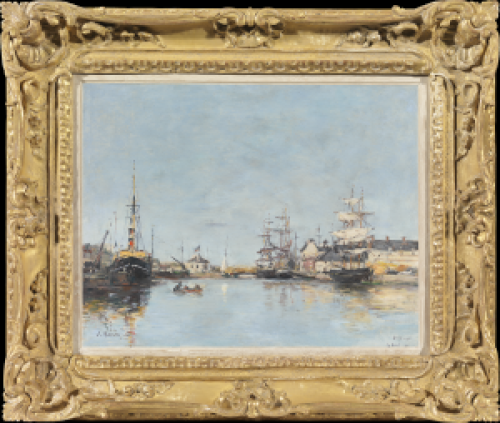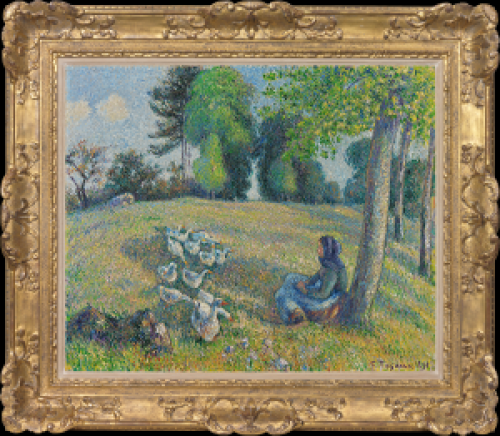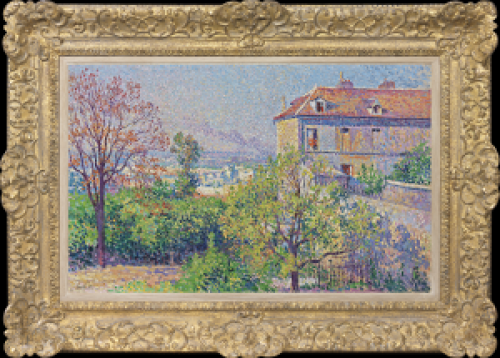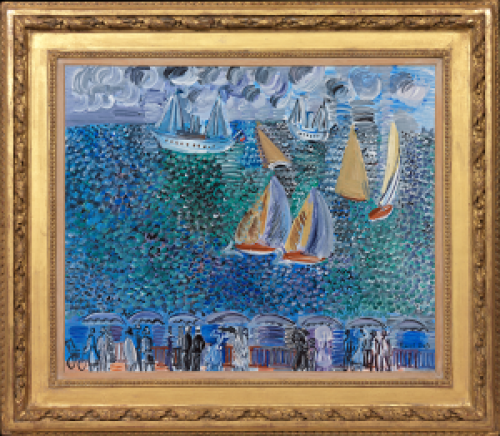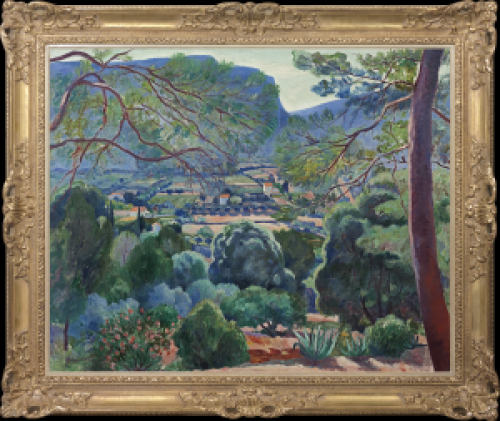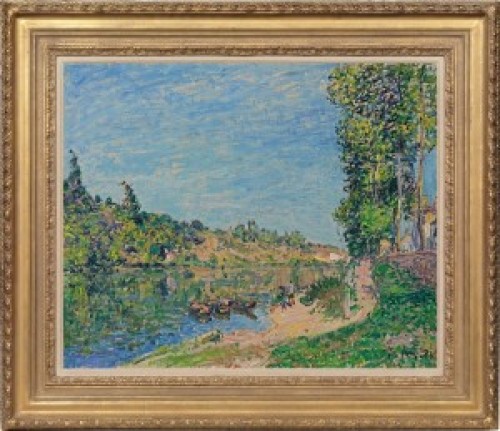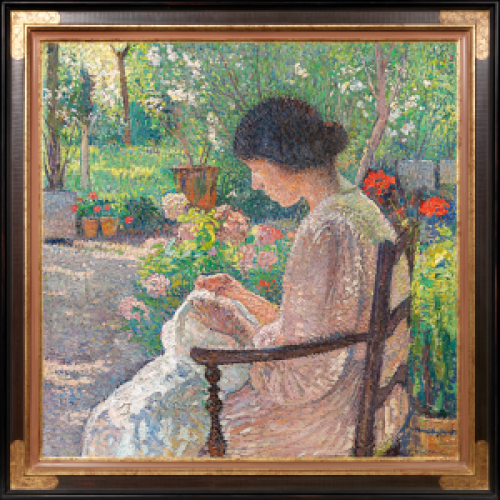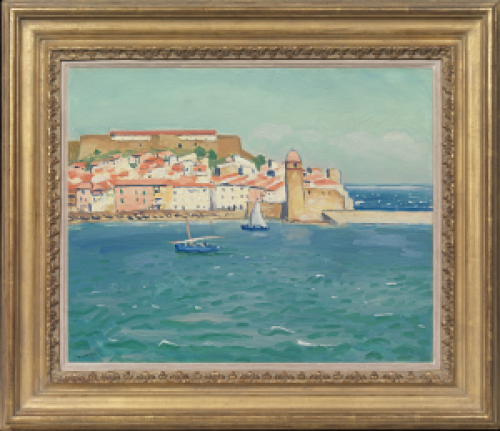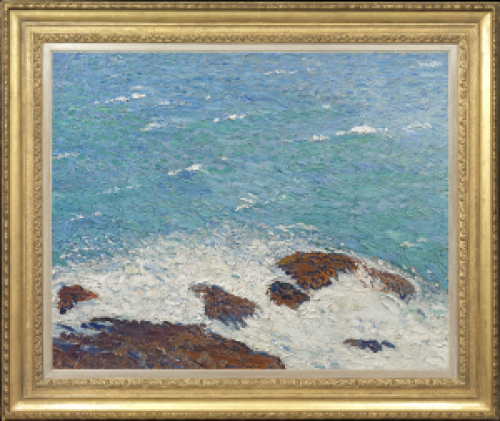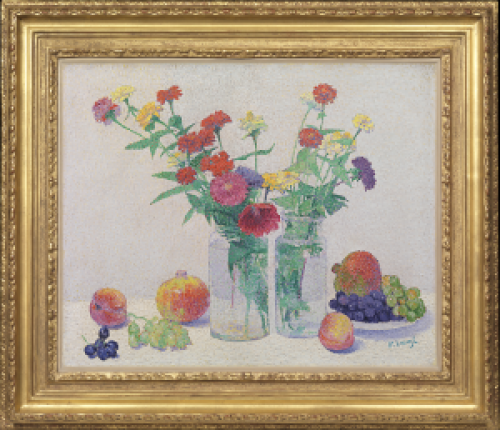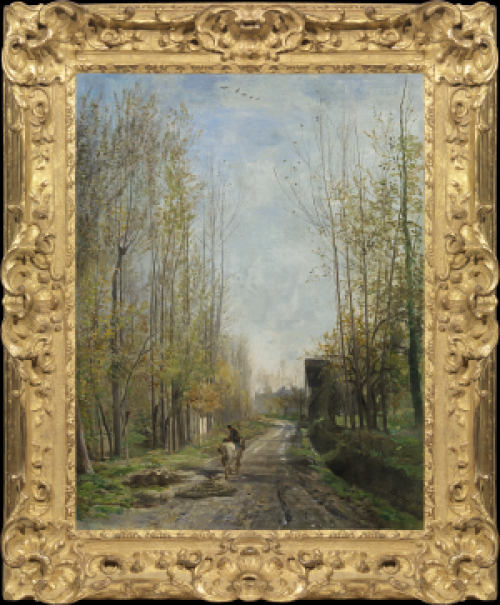GUSTAVE LOISEAU
1865 - Paris - 1935
Ref: CD 173
Le pont suspendu d'Elbeuf, soleil
Signed and dated lower left: G Loiseau. 1911
Oil on canvas: 23 ¾ x 32 in / 60.3 x 81.3 cm
Provenance:
Thomas Agnew & Sons Ltd., London;
private collection, UK;
by descent to a private collection, UK
To be included in the catalogue raisonné of the work of Gustave Loiseau being prepared by Monsieur Didier Imbert, A 460, Attestation C 1094
Gustave Loiseau was fascinated by the Seine, the river at the heart of French national consciousness, which rises north-west of Dijon in Burgundy and flows majestically through Paris before reaching the sea at Le Havre. It is at the centre of his art, painted in many moods and seasons, leading to Loiseau’s being dubbed ‘the historiographer of the Seine’.
This powerful work depicts the suspension bridge over the Seine at Elbeuf, just south of Rouen in Normandy. Warm afternoon light brings out the colours in the shadows playing over the central pillar of the bridge, the old houses on the further bank and the myriad shimmering reflections of the river. Loiseau varies his brushwork, from a dotted, almost Pointillist technique in the water, to richly interwoven, looser strokes to evoke the radiance of the sky. The result is a scene vividly alive with the vibrant manner of Post-Impressionism.
Loiseau shared with the Impressionists an interest in how the modern world infiltrates timeless landscapes and ancient towns. The suspension bridge makes an imposing geometric statement in the foreground of the painting, serving a similar function to Claude Monet’s The railway bridge at Argenteuil, 1874 (Philadelphia Museum of Art). We cannot but admire the sleekness of its design and the inventiveness of its engineering, while the massive pillars recall the monumental architecture of the Romans which still dots the landscape of France. The bridge, designed by Marc and Camille Seguin, was built 1841-43 and destroyed in 1940.
The suspension bridge at Elboef, c.1900.
GUSTAVE LOISEAU
1865 – Paris – 1937
Gustave Loiseau is one of the most poetic and sensitive of the Post-Impressionists. His work shows the influence of Impressionist masters such as Alfred Sisley and Camille Pissarro and he briefly took advice from Paul Gauguin, whilst being a great admirer of Corot. Loiseau experimented with Pointillism, but developed his own style. He is considered to be a pure landscape artist, painting from direct observation of nature in a manner which is reminiscent of Claude Monet.
Loiseau was born in Paris, the son of a butcher from Pontoise who had moved to the Ile-Saint-Louis. He was apprenticed in 1880 to a painter and decorator, a job which he despised, but which confirmed his interest in art. Loiseau discovered the countryside of Pontoise when his parents retired there in 1881; a small legacy from his grandmother in 1887 spurred him to devote his life to landscape painting.
Loiseau studied at the Ecole des Arts Décoratifs and in 1889 at the studio of the landscape painter Fernand Quignon. Loiseau rented a room in a workers’ tenement, La Maison du Trappeur in the Rue Ravignon, Montmartre, which was later to become famous as the Bateau-Lavoir. He became acquainted with Jean-Louis Forain and Adolphe Willette, but his shy, nature-loving personality had little in common with the raucous bohemians of the Parisian art scene. In 1890 he went to Pont-Aven, staying at the famous inn run by Marie-Jeanne Gloanec, where he was befriended by Henry Moret and Maxime Maufra. Although working in a personal style, Loiseau’s paintings from this period show the influence of the Pont-Aven School in their diagonal compositions, shortened perspectives and anti-panoramic fields of view. Returning to Paris in 1891, Loiseau exhibited for the first time at the Fifth Exhibition of Impressionist and Symbolist Painters. He showed paintings at the gallery of Le Barc de Boutteville in Rue Le Pelletier, where two works were bought by the celebrated Rouen collector and friend of Monet, François Depeaux.
For much of his life Loiseau was based in Paris but travelled extensively through France, making repeated trips to Pont-Aven, where he was encouraged by Gauguin in 1894, to Normandy and to Pontoise. Described as ‘the historiographer of the Seine’, he also captured the shifting moods of the Oise and the Eure rivers and the Channel ports. Loiseau joined the Société des Artistes Indépendants in 1893. In 1897 he signed an agreement to sell most of his output to Paul Durand-Ruel, giving him the financial independence to travel more extensively. Loiseau divided his last years between Pontoise (where he is buried) and Paris, where he died in 1935.
The work of Gustave Loiseau is represented in the Musée d’Orsay, Paris; the Musée des Beaux-Arts, Rouen; the Ashmolean Museum, Oxford; the Marubeni Collection, Japan; the Metropolitan Museum of Art, New York; the Museum of Fine Arts, Boston and the Nelson-Atkins Museum of Art, Kansas City.


